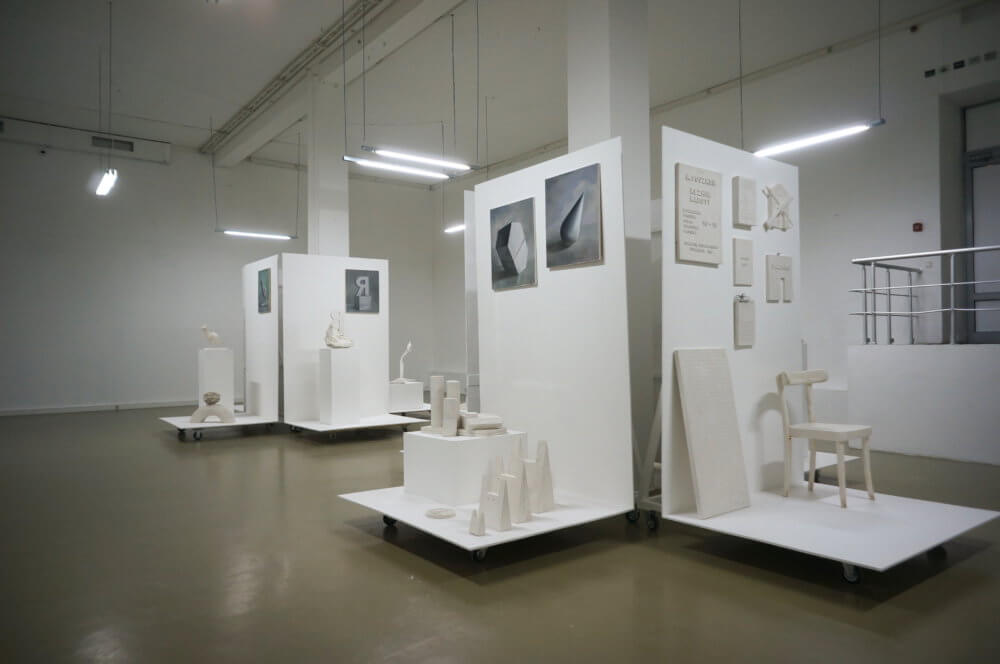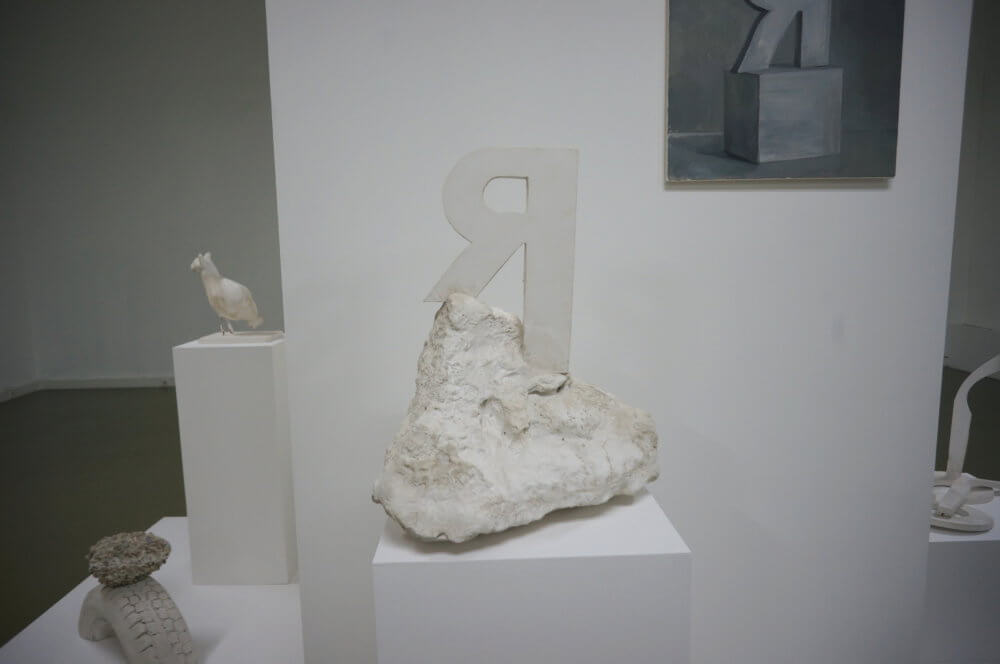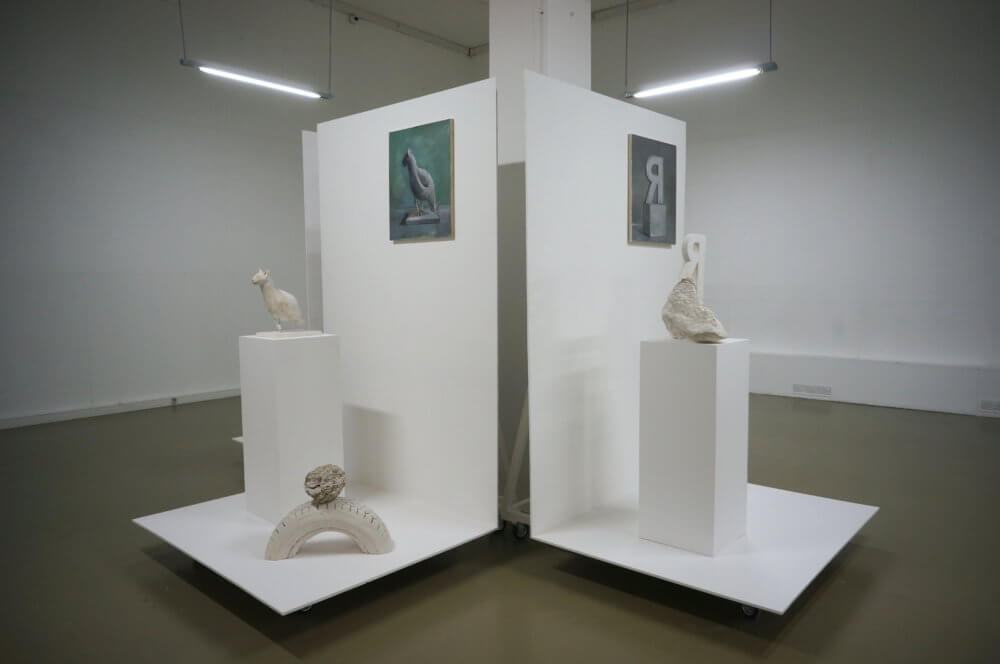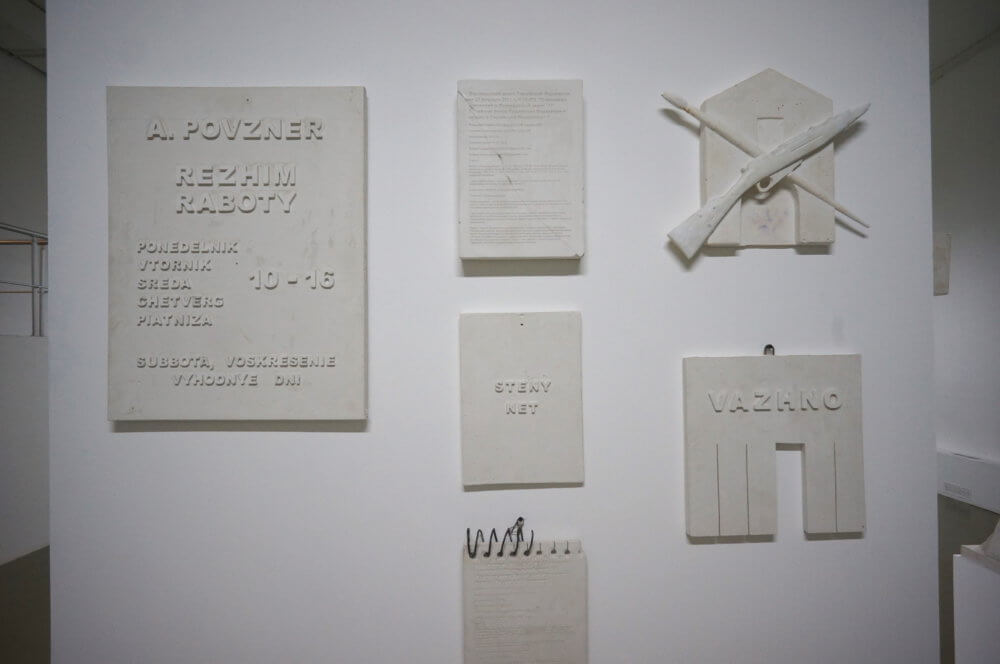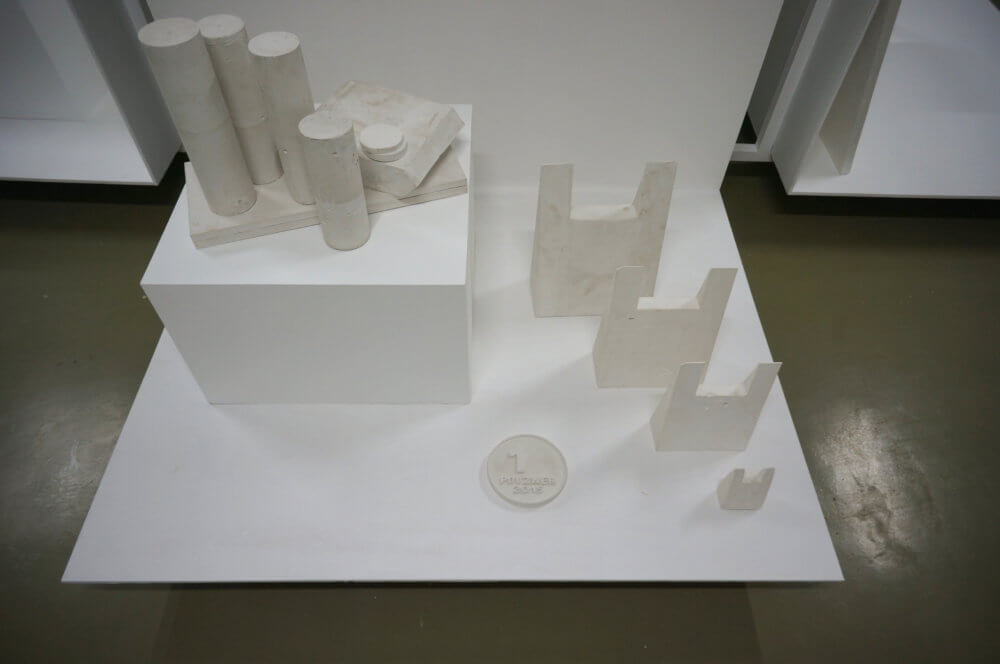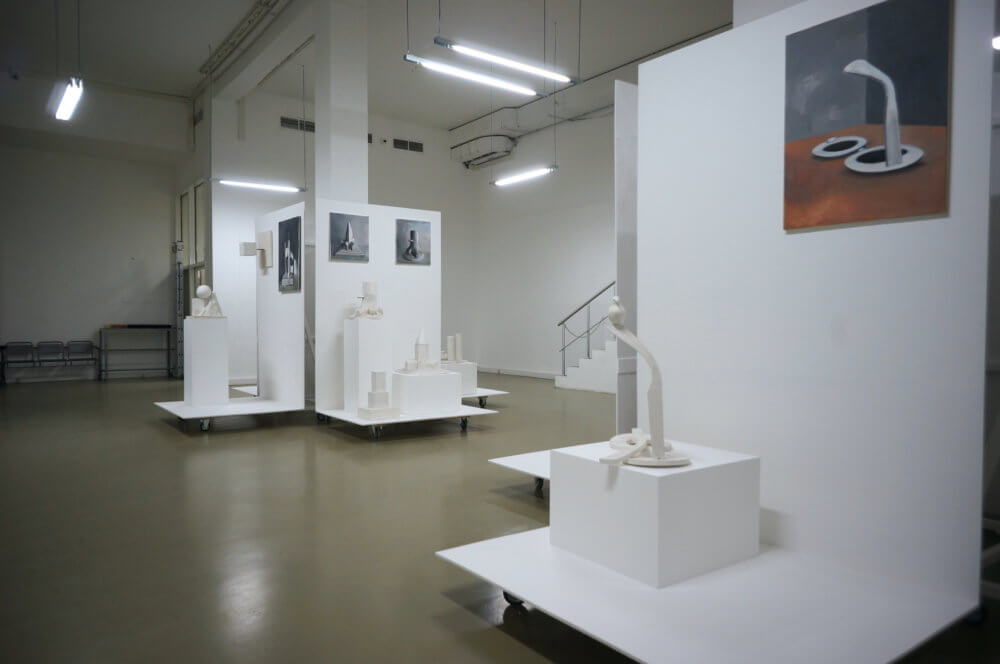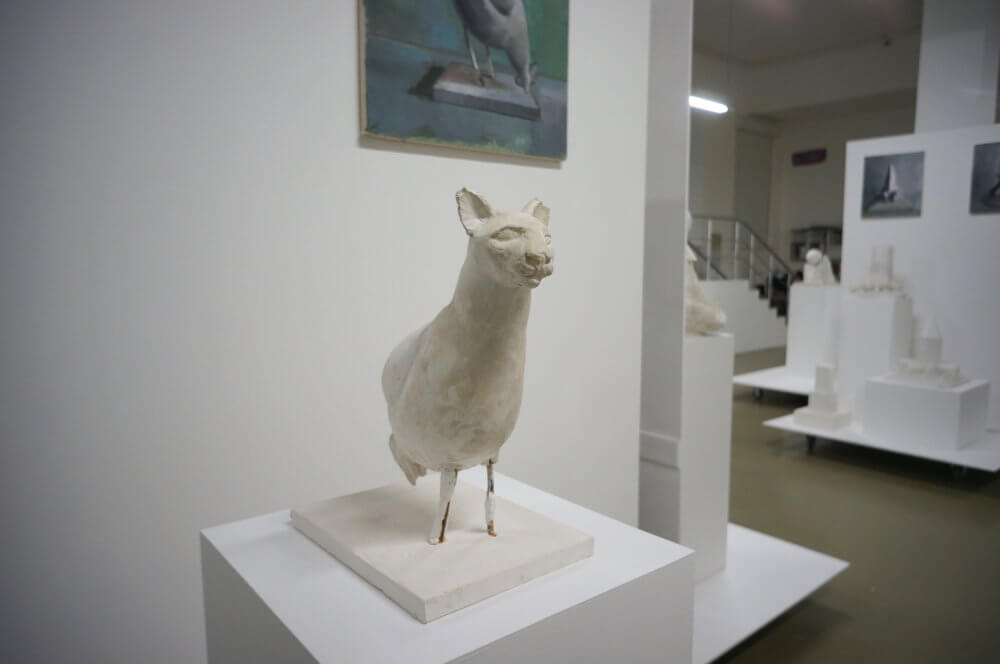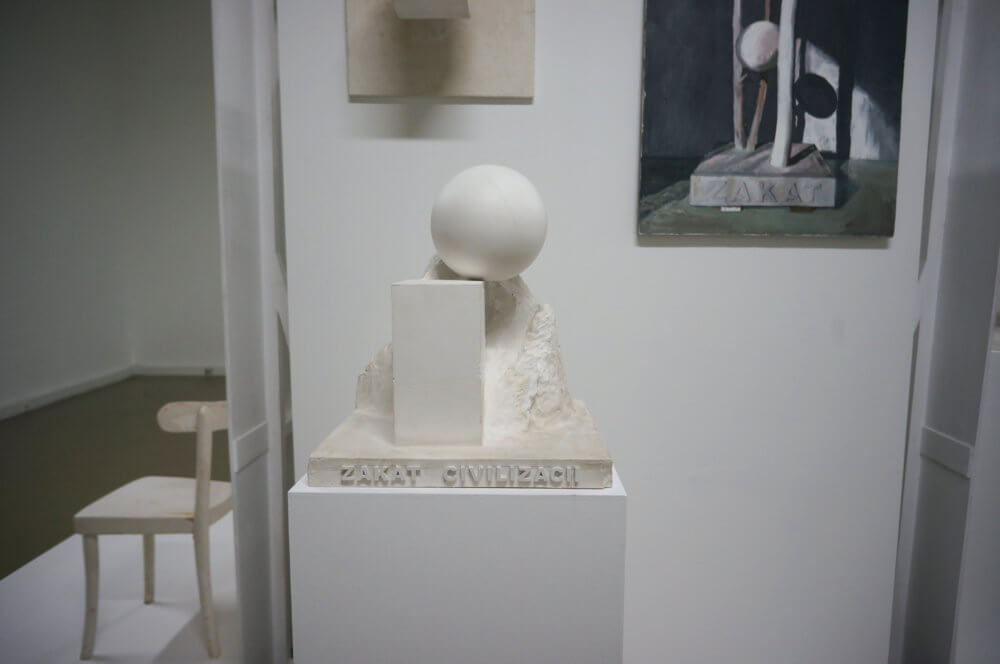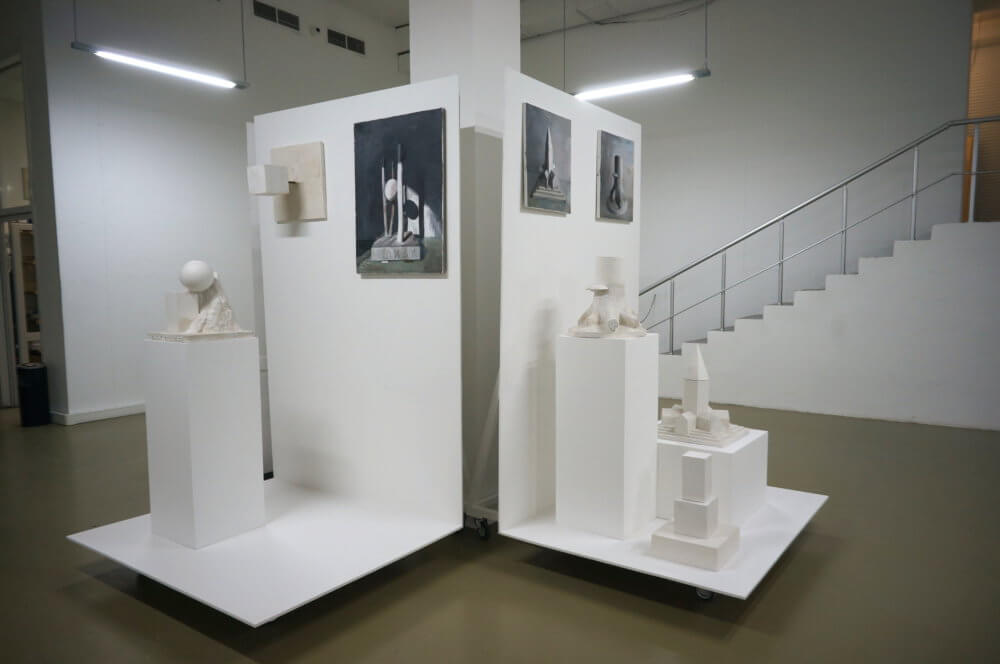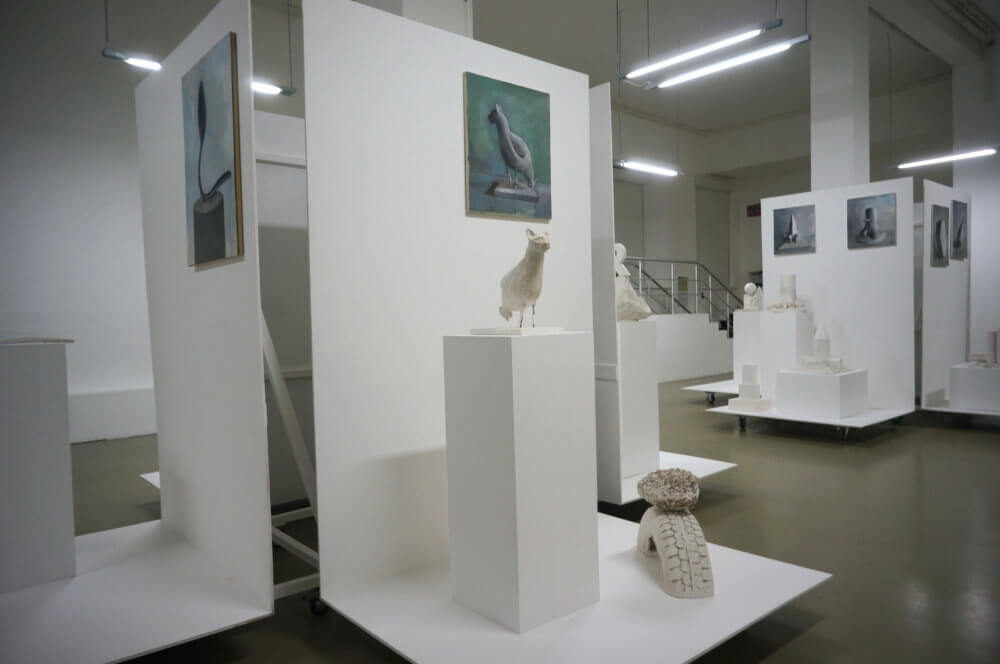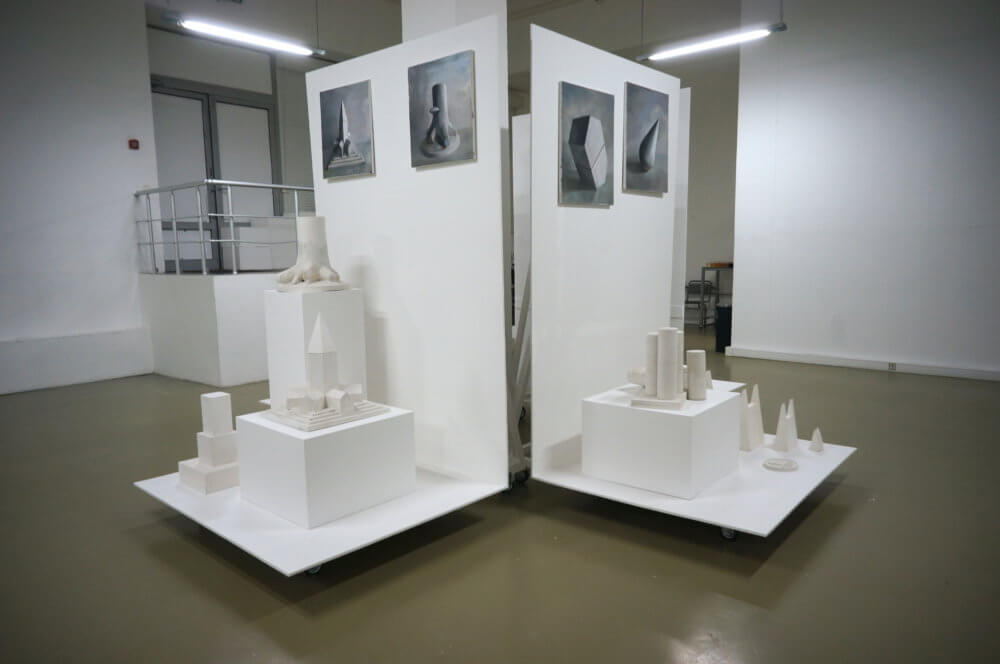Progress Report
2015
XL Gallery
The bureaucratically formal title of Alexander Povzner’s new exhibition allows to analyze the show in the spirit of political economy—an interpretation that relieves the viewer from the indescribable nature of the artist’s objects, sculptures and paintings in terms of subject matter, narrative, or mimesis. The title continues a string of exhibition names related to the themes of labor and factory. The installations and sculptures created by the artist therefore are presented to the viewer as factory goods produced for a certain, limited period in time (Report on the Work Done) and sold by weight (Brutto) during the working hours (Gone to the Shop, Back in 5 Minutes). Logically thinking, Povzner sees his own artworks as goods, although in a historical rather than everyday meaning, where each of the pieces exists on the intersection of such categories as fetish, fetish as a medium of symbolic exchange, and exchange as trade of commodities without economic value.
The problems of verbalizing what exactly Povzner does, that have become commonplace in critical texts about his practice, remind about Marx’s confusion when analyzing the specific qualities of merchandise as instance, as a thing’s level of existence. This very confusion generates absolutely surreal images, easily comparable to Lautréamont’s “chance meeting of a snail and an umbrella on a dissecting table”, all the more so because Marx is also about furniture. A table (not a dissecting one though) that has transformed from a useful handmade thing into a commodity, Marx writes, “is changed into something transcendent. It not only stands with its feet on the ground, but, in relation to all other commodities, it stands on its head, and evolves out of its wooden brain grotesque ideas, far more wonderful than ‘table-turning’ ever was.” (It is easy to imagine the possibility of such an artwork in Povzner’s practice—an upside down dancing table with a wooden head). The reference to the “mystifying side” of a commodity leads Marx to the development of the category “Fetishism of commodities”, based on the information about religious rituals of African tribes available at the time.
Summing up various conceptions of fetishism in the second half of the 20th century, anthropologist William Pietz wrote that fetish “has always named the incomprehensible mystery of the power of material things to be collective social objects experienced by individuals as truly embodying determinate values or virtues, always as judged from a cross-cultural perspective of relative infinite degradation, ‘dénués de valeur symbolique’.” French philosophers—Michel Leiris, cited by Pietz in an article on Giacometti, and Jean-Luc Nancy—searched for the ways to materialize solidified phenomena unbounded by degradation in the Marxist apprehension of commodity and fetish, resulting in the notion of “good fetishes”. In 1929, Leiris was writing about “crises”— psychic conditions associated with the seemingly “trifling, without symbolic value” remembrances: “a luminous Monmartre street”, “a few scraps of a song murmured at random; an encounter in a Greek ruin with a strange animal that must have been some sort of giant lizard”, and the like. 72 years later Nancy continues the list of “good fetishes”: “a lock of hair, a packet of detergent”, “a pebble wrapped in a reed”. The gods, or the financial system are aiming to exchange these phenomena on their value in any of the existing currencies, or on other goods, Nancy writes, but where the exchange is impossible one has to face “irrelevance”, which is sometimes called art or thought.
The Povzner factory produces exactly such goods, extremely similar to “good fetishes” but not forgetting their genealogy, which includes African sculpture along with surrealist objects. In his article, Pietz mentions a golden decoration of the Akans (a tribe in South Africa): a cobra has snatched a hornbill’s chest. It is a sculptural depiction of the proverb based on a local legend. In one of Povzner’s works a hen turns into a cat recalling the proverb about a cat who knows whose meat it has eaten, and the determinism of the food chain in general. In another sculpture, the artist shows transformation of a tree with fungi into a space for what seems to be ritual purposes, overturning organic metaphors popular in architectural descriptions. In the piece Report on the Work Done Povzner introduces two new elements—text (letters) and painting. Text here hardly functions as the artist’s signature or the crux of a joke (as it does in the works of Socialist Realists Leonid Sokov and Alexander Kosolapov)—it is simultaneously abstract, having been reduced to the rhythmic ornament of an inscription per se (hence the use of transliteration instead of Cyrillic alphabet), and concrete as the letter “Я” posing as a constant pilgrim on a hill from the canvases of Caspar David Friedrich. Paintings accompanying the sculptures represent photographs taken by the artist, not real objects, transgressing documentation—a practice based mainly on informational exchange—on the level of commodities characterized by inherent ambiguity. A “good fetish”, in Nancy’s opinion, is also presence that creates sign, and sign that creates presence, a double artifice where immanent strangeness is frozen. In Povzner’s Report presence is clearly evident too, because the constellations of the pieces are installed on wheeled pedestals. The exhibition is a stop, a (plaster) model of the commodity production process, whereby thought becomes art and value is material to the extent of bringing forth an independent financial system with its own currency of One Povzner.
Valentin Dyakonov
